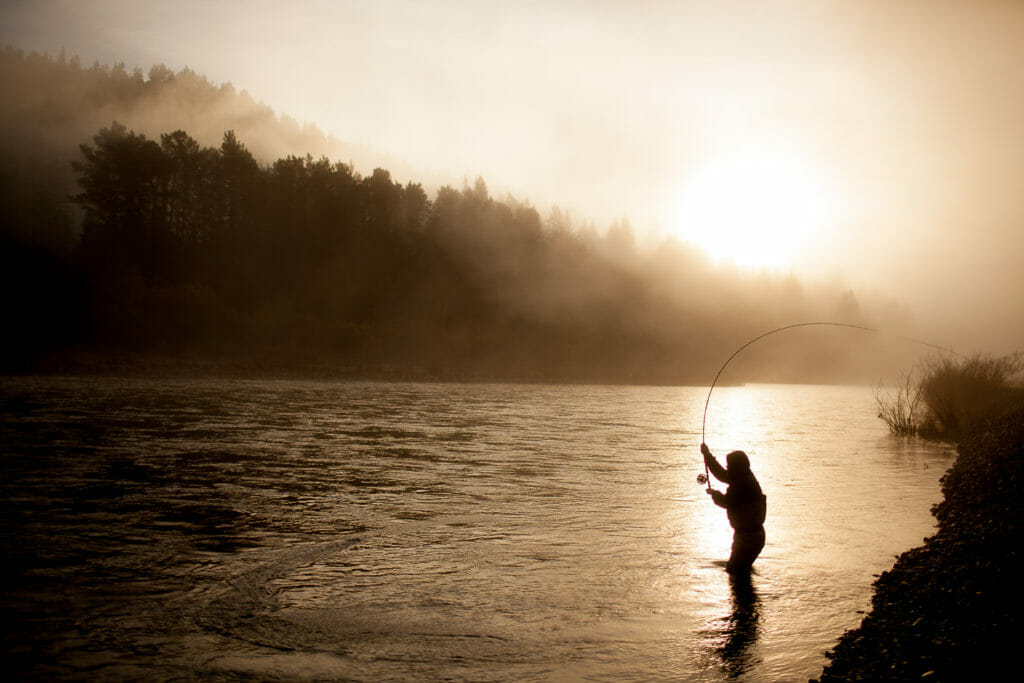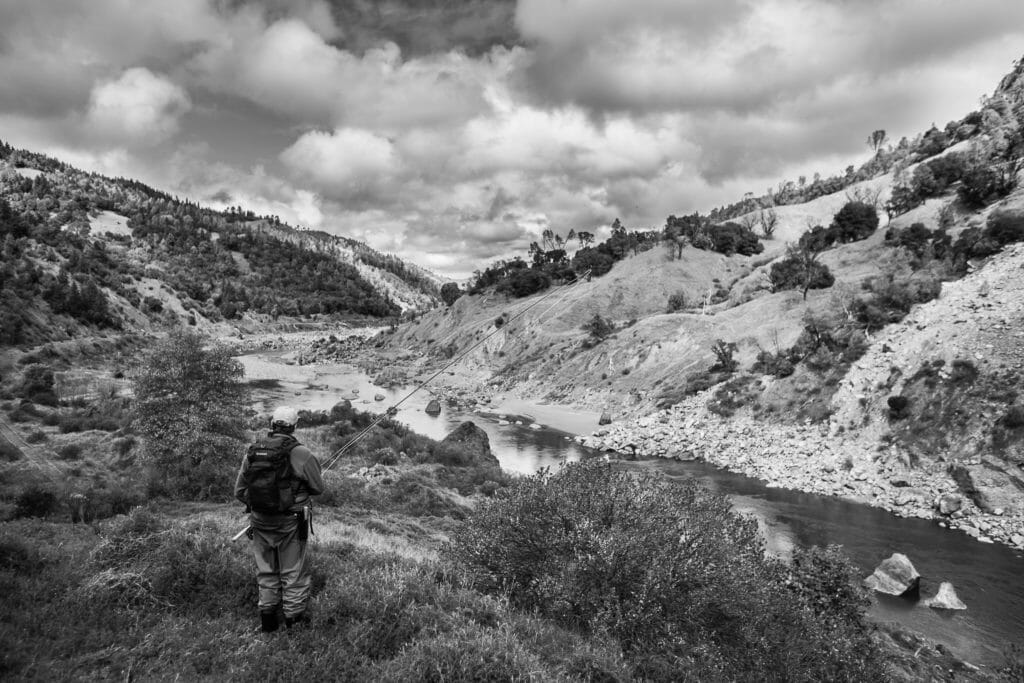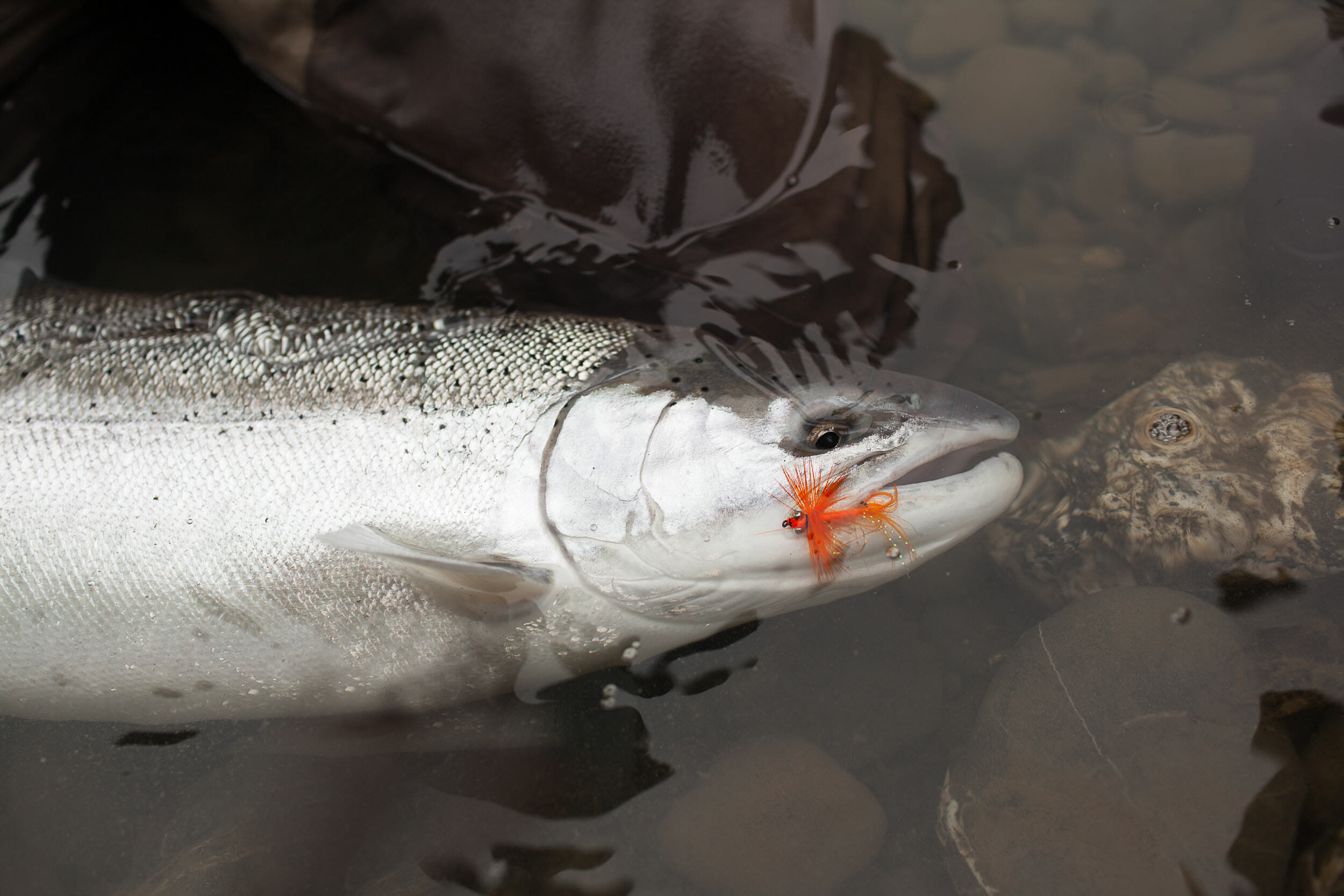By Charlie Schneider
Emerging science can meld with policy and restoration efforts to help reach our ultimate goal of improving steelhead runs.
A previous post at Wild Steelheaders United highlighted the petition to list summer steelhead on the Eel River in Northern California, and discussed research by scientists at UC Davis that suggests premature migration in steelhead was associated with the same locus across multiple populations.
A locus refers to the location on a chromosome where a gene is found. Researchers identified the area in steelhead’s genetic code where there was variation among the life histories, now termed GREB1L.
While the California Department of Fish and Wildlife and the National Marine Fisheries Service consider the petition to list summer steelhead in northern California, let’s look at some new research presented at the 2019 Salmonid Restoration Federation conference by graduate student Samantha Kannry from the Miller Lab at UC-Davis on how we might apply this knowledge to restoration.

Kannry focused on the Eel River and three of its major branches, the Van Duzen, Middle Fork and Upper Mainstem Eel above Scott Dam, a total passage barrier for the last 100 years. The Eel is the southernmost known extent of the summer run life history in O. mykiss.
The team surveyed juvenile steelhead for two years throughout the basin above and below areas known as “roughs.” These jumbles of house-sized boulders often act as natural passage barriers to salmonids. Let’s look on two of the things on which Kannry focused: the spatial distribution of individuals with the summer run gene and the genetics in the resident trout population above Scott Dam.
First, the spatial distribution of summer run genes is exactly what one might expect. Individuals with summer run genes tend to be found higher in watersheds including upstream of many potential passage barriers.
Anadromous fish spawn in freshwater because it confers a survival advantage for their offspring. In the relatively nutrient-poor rivers of the Pacific Northwest, there is less food, but also fewer other fish to eat juveniles. The distribution suggests that summer run steelhead have evolved to spawn in the upper reaches of watersheds, perhaps closer to cold higher elevation water, away from predators or for other reasons.
Thus, we might expect to find summer run steelhead using the upper mainstem Eel above Scott Dam historically. Kannry specifically looked for both the summer run and anadromous genetic markers above Scott Dam—and found both. This strongly suggests the habitat above Scott Dam was used by summer run steelhead before the dam was built and that there is the potential for summer run fish to repopulate the area if passage were restored.
Kannry’s research is particularly timely given the listing petition for northern California summer steelhead, as well as recent developments with the relicensing of Scott Dam and a smaller dam downstream of it, collectively known as the Potter Valley Project. Her research points toward specific geographic areas to focus on to help recover summer steelhead and that removal of Scott Dam could provide an additional area of critical habitat for summer run fish.
Wild Steelheaders United is working, through TU staff and TU’s Redwood Empire Chapter, to take advantage of the Potter Valley Project (PVP) relicensing process to advance a comprehensive water management solution that will help both Eel River steelhead and people who depend on water from this river.

To this end we have been participating with a group of regional stakeholders working toward a “two-basin solution” (the PVP doesn’t just impound the Eel River, it also diverts water through a tunnel for use in the more populated Russian River basin). Modeling work done by the group has shown that there may be enough water to meet needs in the Russian River basin with a winter only diversion, leaving open the possibility of removing or modifying Scott Dam to allow for fish passage and allowing summer steelhead to return to 100+ miles of historic habitat.
Special thanks to Samantha Kannry, PhD, for sharing her soon-to-be-published work with us. We will update this blog with a link to her work as soon as it is available.
Charlie Schneider is president of TU’s Redwood Empire Chapter. Top photo courtesy Marcel Siegle/Fly Fishing Junkie.



